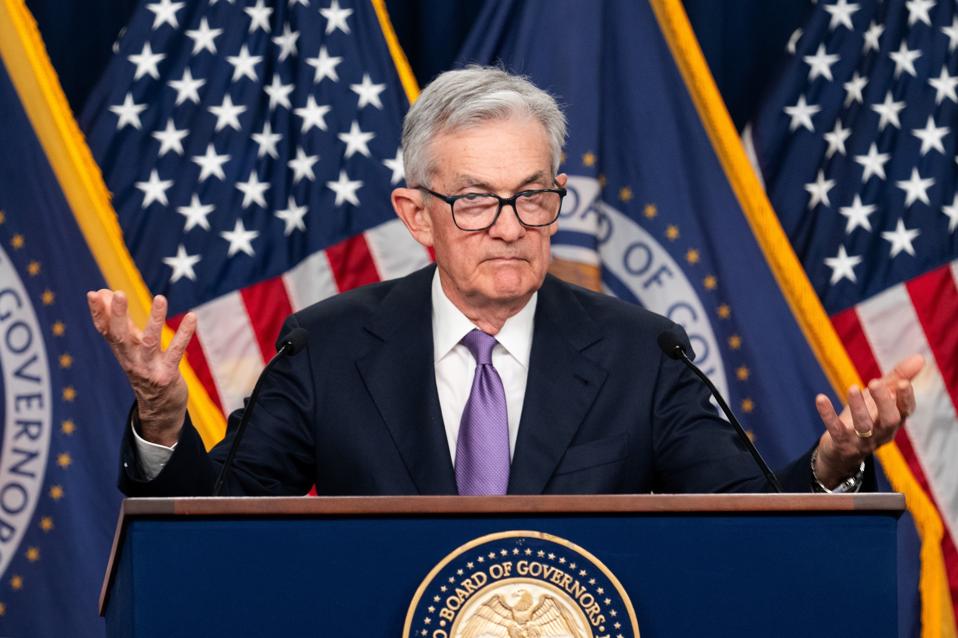Federal Reserve Chairman Jerome Powell made headlines last week at the final Federal Open Market Committee meeting of 2023, suggesting that the Fed was beginning to discuss interest rate cuts for 2024. This surprising announcement marks a dovish departure from the hawkish stance that had characterized the Fed’s approach for the past two years.
“We’re seeing a labor market that is coming back into balance by so many measures, and we’re seeing inflation making real progress. These are the things we’ve been wanting to see,” said Powell in remarks following Wednesday’s meeting.
In the preceding years, specifically 2022 and the larger part of 2023, the Fed, under Powell’s leadership, adopted an unyieldingly hawkish stance. This approach drew comparisons to the inflationary epochs of the 1960s and 70s, with the Fed asserting its commitment to curb inflation at all costs, reminiscent of the policy of former Fed Chair Paul Volcker.
Despite inflation levels remaining a percentage point above the 2% target that Powell had advocated for, the Fed indicated its readiness to cut interest rates as many as three times in 2024, thereby signaling a drastic reversal from the rate-hiking campaign initiated in March 2022 and Powell’s higher for longer message from the most recent press conferences.
Why Now?
The motivations behind this major policy pivot can be dissected into three key aspects. First, the simplest explanation could be that Powell and the FOMC were confident inflation would hit the 2% target in 2024, and thus, they hoped to start easing policy before actual rate cuts. However, this approach carries the risk of premature policy easing, potentially leading to a resurgence of inflation.
Second, with the presidential election year looming in 2024 and already unsustainable deficits exacerbated by rising debt service on $34 trillion in government debt, the Fed might be bending to political pressure. By signaling rate cuts – thereby signaling the defeat of inflation – interest rates may naturally decline while asset prices remain buoyant, thus easing financial conditions without immediate Fed action. However, if asset prices increase and consumers are unleashed again by decreasing rates, pushing wages and inflation higher, this could lead to an inflationary spiral.
The last, somewhat cynical, possibility is that the Fed is apprehensive about forthcoming economic data and believes a recession might be around the corner. By signaling a pivot and allowing the market to ease financial conditions naturally, the Fed may be attempting to avert a recession in an election year. However, this could reignite inflationary pressures if not carefully managed.
Economic Impact
The Fed’s pivot could have profound implications for the U.S. economy. By signaling potential rate cuts, the Fed hopes to begin easing policy before actually lowering rates, thus achieving the elusive “soft landing.” However, this approach risks repeating former Fed Chairman Arthur Burns’ miscalculation from the 1970s—easing policy prematurely, potentially leading to a resurgence of inflation.
The Fed’s pivot has stirred a variety of responses. The markets immediately reacted positively to the Fed’s dovish pivot, adding steam to a ‘Santa Claus rally’ already underway, pushing asset prices to new all-time highs. Tim Duy, chief economist at SGH Macroeconomics, told AP, “It appears that inflation has returned to 2%…The Fed looks like it has won that battle.”
Others fear it might reignite inflationary pressures. Several critics also argue that the Fed might be bending to political pressure, which could lead to an economic fallout in the long run. Brad Conger, deputy chief investment officer at Hirtle Callaghan & Co., told CNBC, “Today’s statement was Powell’s golden chance to press back on the markets’ undermining of his policy…Instead, they used the occasion to congratulate themselves on a mission accomplished.”
The Fed’s pivot marks a significant shift in monetary policy, and its impacts will be closely watched in the coming year. While the immediate aftermath has seen a bullish stock market, it’s too early to determine whether this reversal will successfully curb inflation without inducing a recession. As investors, economists, and policymakers worldwide wait with bated breath, the party continues, but caution and vigilance remain important as markets enter an uncertain new year.

